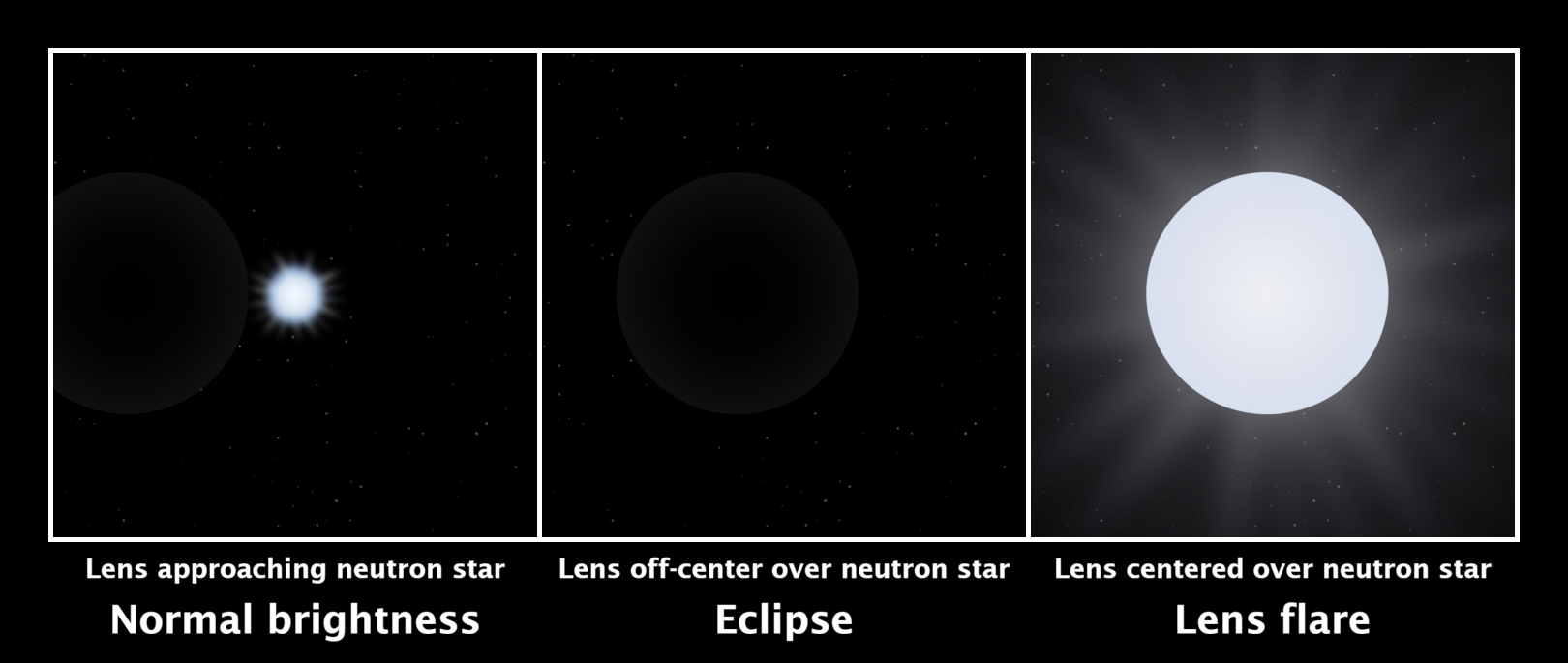Searching for ET with X-ray Lenses
In SETI, brighter is better: the more powerful a signal is, the further away we could detect it. Maybe aliens use huge power plants to keep a beacon going in hopes of grabbing our attention. Yet the Universe is already filled with brilliant objects, so maybe extraterrestrial intelligences merely need to send the light from those our way. Lenses and mirrors are familiar tools to re-direct light, but they have limitations. A very fundamental one is that lenses and mirrors at best preserve the surface brightness of light, the amount of light coming from each part of their sky. That's why if you put a magnifying glass out in deep space in front of the Sun, astronomers wouldn't notice any difference: the lens would look only as bright as the parts of the Sun it blocked. To do something really noticeable to astronomers on other planets this way, you'd need a magnifying glass as large as the Sun.
Extraterrestrials wanting to use a lens to send a signal flare to us would need to choose something small and bright as a light source, which means something hot. Among the hottest things in the Universe are neutron stars. These are the cores of dead stars once much bigger than the Sun. A single neutron star contains more mass than the Sun and is the size of a city, and has an enormous surface gravity. Because of that gravity, things that fall onto it accelerate to a few percent of the speed of light and release an enormous amount of energy on impact. Some neutron stars orbiting close to a star like our Sun rip gas from their companion with their gravity, sending a continual downpour onto their surfaces. That gas heats to thirty million Kelvin when it hits, hotter than the Sun's core. These systems are called low mass X-ray binaries, and they are some of the brightest things in a galaxy. In some of them, the power of a hundred thousand Suns or more can come from a region the size of a town. The catch: almost all of this light is in X-rays.
The idea of my new paper is that technologically advanced extraterrestrial societies could boost the brightness of these objects even further with an X-ray lens. Suppose they have X-ray lenses that are a thousand kilometers across—certainly huge by our standards, but tiny compared to the Sun—and they place them in orbit around an X-ray binary. When one of the lenses passed directly in front of the neutron star, the system would appear to brighten several thousand times for about one second. These "lens flares" could be as bright as a billion Suns, or a small galaxy. Most remarkably, the extraterrestrial intelligences spend no energy of their own on these flares. All it takes is a properly aimed lens. Of course, there would be a lot of challenges. They would have to travel thousands of light years to a bright X-ray binary. They would need to find material to build the lenses. That's a big problem since a neutron star is born in a supernova that obliterates the planets and asteroids in any solar system it's in, and if anything survived that, the X-ray binary itself would evaporate rock out to beyond the distance Jupiter orbits the Sun. They would need a lot of lenses to make sure astronomers in all directions would see a flare. Then, they would need to make sure the lenses don't crash into each other, or lose their aim on the neutron star. If these problems could be solved, though, the lens flares could act as a beacon lasting thousands, even millions of years.

We would need to look for lens flares in X-rays. X-ray SETI is not at all common, although people suggested that extraterrestrial intelligences might drop asteroids on neutron stars decades ago. If a lens flare happened in the Galaxy, however, it would be among the most powerful X-ray events astronomers have ever seen. On the other hand, they are probably very rare, with decades between each lens flare. We have had X-ray satellites capable of detecting them in the Galaxy for at least twenty years. More common would be shadowing events, when the lens is off-center with the neutron star and magnifying empty space. While they would be nowhere nearly as obvious, they might be a hundred times more common, as the many lenses in orbits tilted slightly with respect to us keep passing over the neutron star. If we happened to be really lucky with the timing, we might even be able to see a lens flares out to about thirty million light years from Earth—an intergalactic beacon requiring no power of its own.
You can read a preprint of my article describing lens flares on the arXiv pre-print server.
Header image credit: NASA
